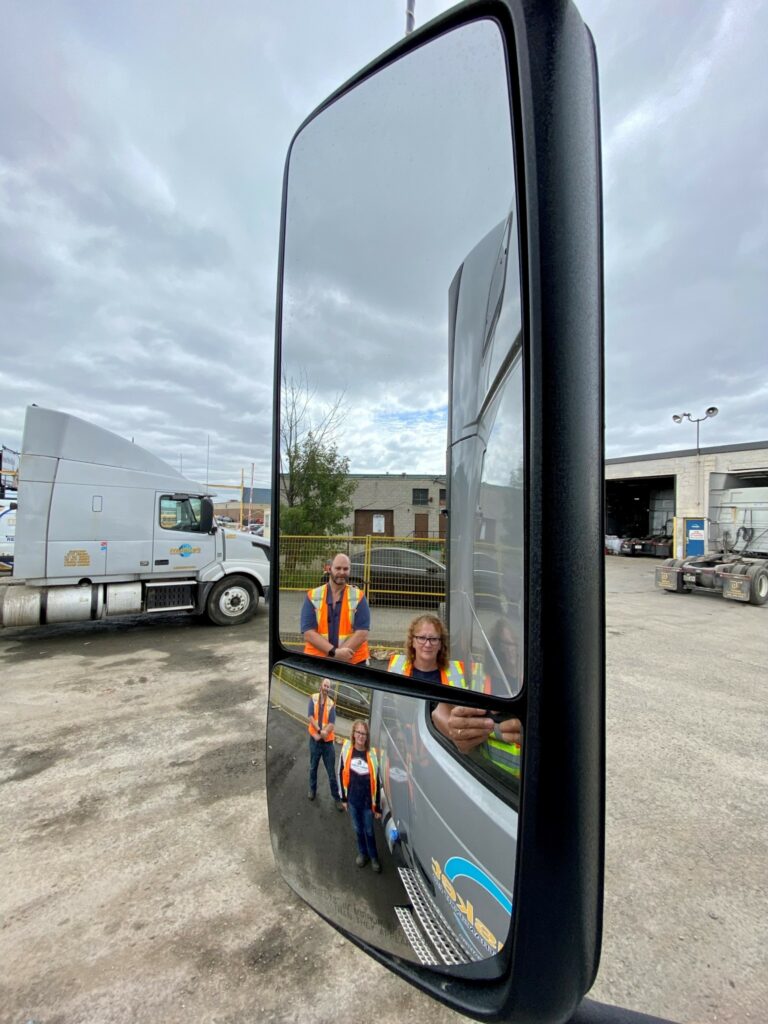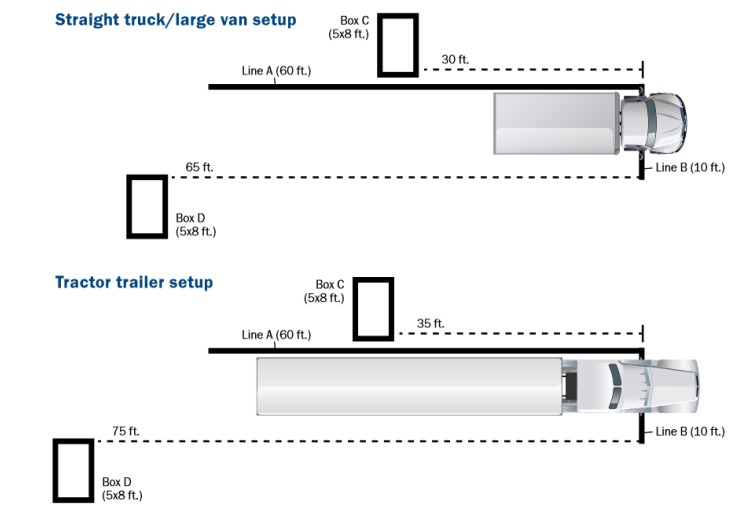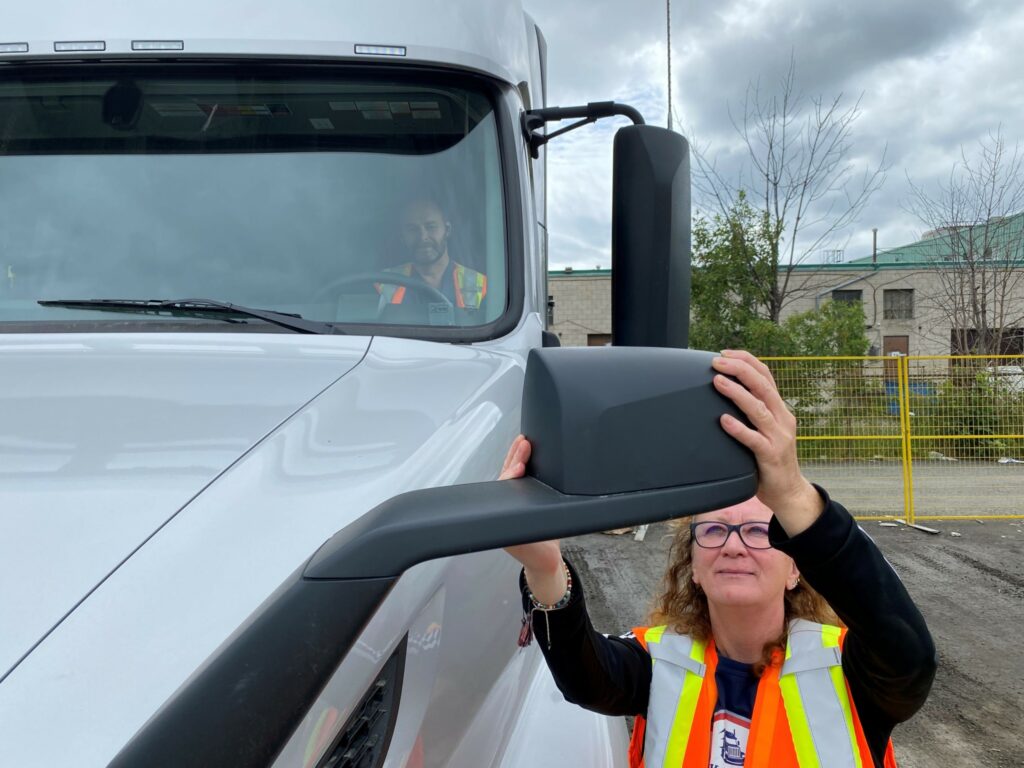8 tips to aim, adjust, and use your truck mirrors
Knowing what is happening behind you is almost as important as the view through the windshield.
Most trucks have six rearview mirrors to meet this need — two door-mounted mirrors on each side of the cab, and a mirror on each fender. But the surfaces must still be aimed in the right direction to maximize the view.
Sandra Graham, operations manager at Commercial Heavy Equipment Training (CHET), and Daryn Rabb, health and safety manager at Musket Transport, offer several tips to properly aim, adjust and use these all-important tools.

1. Use available mirror check stations
Mirror check stations found in many fleet yards offer an easy tool to aim and adjust mirrors before heading out on the road, Rabb says.
Objects like cones are set up in fixed positions. Simply pull up to the marked location and adjust the mirrors until each object can be seen.

2. Follow the 90-10 rule
When aiming the door or “West Coast” mirrors, follow the 90-10 rule. You should be able to see 90% of the road and 10% of the trailer on both sides of the cab, Graham says.
The convex mirror at the bottom provides the bigger picture. This overlaps the reflection in the mirror above it, so you can see the lane beside the truck and reduce blind spots.
Although most of the focus is on the road beside and behind the truck, the remaining 10% sliver helps to track curbs while turning corners, monitor straps on flatbed loads, or see the lights that indicate a working reefer.

3. Remember the broader picture
Fender mirrors, when available, offer a broader view of the lane beside a truck. When the vehicle is rounding a corner, they play a key role in tracking the trailer, Rabb says.
Get help from another person when aiming and adjusting these mirrors, he adds, noting how this will limit the number of trips back and forth to the driver’s seat.

4. Watch for merging traffic
When traffic merges onto a roadway from the right, it enters a blind spot. The convex mirror at the corner of that side of the truck shows what is approaching from behind. It effectively offers another 10 feet of visibility, Rabb says.
5. Keep your head on a swivel
Graham says truck drivers should make sure they move their heads when checking mirrors wherever they’re mounted, to ensure none are overlooked.
6. Track vehicles through the blind spots
Every truck will have a blind spot, but the trick is to track the reflections of vehicles as they move from one mirror to the next.
“If I see a blue car coming up in my mirrors, I make sure I see a blue car going away. If I don’t see it going away, it is somewhere in my blind spot,” Graham says.
Rabb offers another tip: “If it’s a sunny day, look at your shadow. If you have something in addition to your trailer shadow, you have a car in your blind spot.”
7. Keep the mirrors up
Many drivers make the mistake of aiming their mirrors too far down, limiting the view of the long road behind them. A better way to monitor the trailer wheels is to shift your body as needed, he adds.
8. Keep it clear and clean
Make sure the mirror heater is working, especially in cold weather, Graham advised. And keep a squeegee in the truck to clean the mirrors when they get dirty.
Have your say
This is a moderated forum. Comments will no longer be published unless they are accompanied by a first and last name and a verifiable email address. (Today's Trucking will not publish or share the email address.) Profane language and content deemed to be libelous, racist, or threatening in nature will not be published under any circumstances.